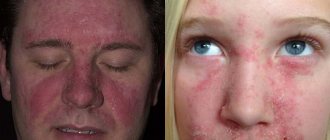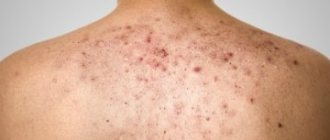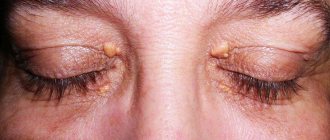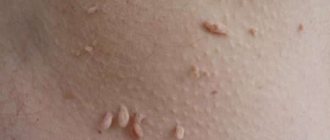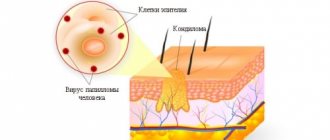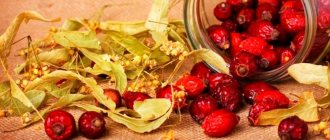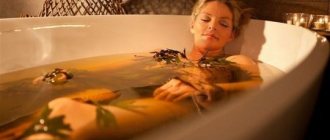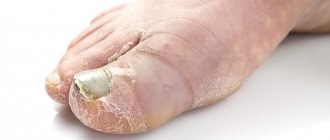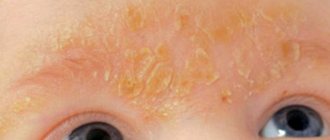.
What is seborrheic dermatitis and what are its manifestations is a question that torments many modern people. Seborrheic dermatitis (a type of seborrheic eczema) is a long-known skin problem. This disease is characterized by damage to those areas of the skin where the sebaceous glands work most strongly. Basically, this is the scalp, face, chest area, shoulder blades. The causative agent of this unpleasant disease is parasitic microorganisms of the Malassezia group.
Malassezia fungus causes seborrhea
Causes of seborrheic dermatitis
Scientists have found that the fungus, which provokes inflammatory processes on the body, is an integral part of the normal microflora of the human skin. They settle near the sebaceous glands and live off the secretions they secrete. They feed on fatty acids. As soon as triglyceride (one of the main sources of cell nutrition) produced by sebum enters their diet, the fungi secrete an unsaturated fatty acid, which in turn is foreign to the body. Inflammatory processes begin, the skin becomes irritated, dries out, and loses its protective properties.
When a favorable environment is created for parasitic microorganisms, the body can no longer cope with control functions, it becomes unable to prevent the growth of fungi.
For example, the Malassezia fungus lives on the head, under the hair; its total share is 46%. When the scalp dries out and a person develops dandruff, the presence of fungus increases by 0.5 times. And when seborrheic dermatitis is diagnosed, the fungus will multiply up to 80%. Therefore, the clinical picture indicates that a rapid increase in the number of parasites has begun.
Seborrhea on the scalp
Factors that provoke fungal growth
Like any other skin disease, seborrhea is no exception and has a complex nature of occurrence. The main factors causing the proliferation of the fungus are neurogenic, hormonal and immune changes in the well-coordinated functioning of the body. Any shift, or perhaps a combination of them, leads to the development of skin diseases. The fungus, in normal quantities, is present in all humanity, but not everyone has it in its extreme state and causes irritation. This may be influenced by various factors.
- First of all, these are nervous experiences, disturbances in a person’s mental state. According to statistics, most patients diagnosed with seborrheic dermatitis have problems with the nervous system. The saddest thing about this is that the disease, which originates from the nerves, is practically not curable.
- There is another reason - a decrease in physical activity. A sedentary lifestyle leads to excessive production of sebum, which thereby provokes the development of bad microorganisms.
- Newborn period - up to 6 months, infants may also experience skin inflammation. This is associated with hormonal changes in the mother’s body, and she passes them on to the newborn through milk. After stopping feeding or normalizing the mother’s hormonal levels, the symptoms of seborrhea in the baby disappear.
- Immune factors of influence. When immune processes are disrupted, skin damage by fungus is also observed.
- Violation of a normal balanced diet and the presence of bad habits.
- Use of aggressive cosmetics and detergents.
- Excessive work of sebaceous ducts, sweating, as well as hereditary predisposition, stressful situations.
Unhealthy diet is one of the causes of seborrhea
Causes of the disease
The causes of seborrheic dermatitis include:
- lack of vitamins;
- diabetes;
- eating disorders;
- high oily skin;
- endocrine system disorders;
- chronic lack of sleep;
- smoking;
- alcoholism;
- addiction;
- constant stressful situations;
- thin protective layer of skin;
- immune system disorders;
- long-term use of hormonal drugs.
Seborrheic dermatitis can also be caused by chronic gastrointestinal pathologies.
For all these various reasons, the saprophytic fungus multiplies very quickly and releases toxic waste products that harm the skin surface of the face.
Indicators of seborrheic dermatitis
On the scalp, dermatitis looks like dandruff, it just becomes too much. The skin dries out, becomes inflamed, itches, and areas of pain appear. Peeling scales appear, from small to large (in the form of plates). Patients often confuse and mistake an obvious disease for ordinary dry skin. They try to wash their hair less often, but this process will only worsen the overall picture of the disease. Severe seborrhea in the hair is characterized by redness and the formation of plaques that cause itching. They are covered with greasy yellow scales. On the face, lesions are usually located symmetrically, at the boundaries of hair growth, above the eyebrows, at the boundaries of the mustache, eyelashes, in the nasolabial folds, in the outer ears, in the folds behind the ears.
On the body, the skin suffers in the chest area, between the shoulder blades, in skin folds, in the armpits, in the groin areas, under the breasts. These places begin to turn red, peel, burn, and itch.
The disease is chronic, and under favorable conditions it can develop again. Anything can be cured, don’t despair.
Types of seborrhea
Seborrhea on the face, the treatment of which consists of an integrated approach, can be of the following types:
| Name | Peculiarities | How it manifests itself |
| Dry seborrhea | The disease most often affects children, elderly people and weakened women. | With this form of the disease, the skin of the face becomes dry, which is expressed in the appearance of cracked, flaky areas with a large number of scales. |
| Oily seborrhea | Typically occurs in adolescents during puberty. | It manifests itself as characteristic itching, enlarged pores, and acne. |
| Mixed seborrhea | Can occur at any age. | Combines the symptoms of dry and oily seborrhea. |
Seborrhea is an inflammatory disease of the facial skin, manifested by the appearance of itchy and flaky lesions. To treat the disease, various external agents are prescribed along with vitamin and mineral complexes. And also patients need to adhere to a certain diet and daily routine.
Symptoms of oily seborrhea at the initial stage are as follows:
Let's work together to make the unique material even better, and after reading it, we ask you to repost it on a social network convenient for you. net.
How to diagnose seborrheic dermatitis
Seborrheic dermatitis is not difficult to diagnose in most cases. It is even possible to notice changes on the skin on your own, since its favorite places are our face and head. The dermatologist conducts a comprehensive examination, prescribes tests, and gives directions for scraping. Detection of a fungus will not indicate the presence of a disease, since it is also present in the normal skin layer. The examination is often carried out using a dermatoscope to determine the number and nature of the lesions. Based on the data obtained during the examination, the doctor will tell you how to treat seborrhea. The recipe usually includes:
- a course of light therapy, when the affected areas are exposed to artificial rays of light;
- external hormonal or antifungal ointments, they are divided according to the degree of impact;
- agents with anti-inflammatory effect;
- antihistamines;
- sedatives;
- vitamin complex, biological additives - one of the best sources of minerals and trace elements is brewer's yeast.
Light therapy will help get rid of seborrhea
Cabbage leaves
Reviews of folk remedies for treating seborrheic dermatitis are mostly positive. Patients often mention cabbage leaves in a positive way, which stop the growth of the fungus and soothe the affected areas of the skin. The recipe is very simple: beat a few cabbage leaves with a hammer and apply two or three layers to the sore spot. For convenience, it is better to secure the compress with an elastic bandage. You need to change the bandage to a new one after twelve hours. Therapy can be carried out continuously until the disease subsides. As a rule, one to two weeks is enough.
Unconventional methods of treatment
Treatment of seborrheic dermatitis with folk remedies also has its admirers and positive reviews. The short-term effect of hormonal drugs, the constant absorption of chemicals does not bring the desired result and again you have to consult a doctor with the same problem. Expensive drug treatment can easily be replaced with folk remedies. Soda secrets Almost all of us have baking soda in our home, and this is one of the proposed methods of fighting skin infections. There are many ways to use it correctly.
- Soda is mixed with glycerin in equal proportions, a little boiled (soft) water is added so that you get the consistency of porridge. This mixture should be cooled to a temperature that is pleasant to the skin and applied to the scalp for twenty minutes and rinsed off. This must be done before washing your hair. Don’t be afraid to massage your head a little when applying, soda will be better distributed on the surface of the skin and, due to its abrasiveness, will increase blood flow to the hair follicles. Sometimes this mixture is enough to completely cleanse your head, without subsequently using shampoos. Everything is individual and if you want to wash your hair with cosmetics, then choose soap products with hypoallergenic properties.
- Otherwise, take one liter of boiled water and soda (a teaspoon is quite sufficient). It completely dissolves in liquid and the resulting solution should be used to rinse the scalp before washing.
Soda will perfectly help to overcome seborrheic dermatitis of the scalp and will not allow a recurrence of the disease to develop in the future.
Soda prevents relapses of the problem
Irradiation
In small doses, ultraviolet irradiation is a fairly effective remedy for eliminating seborrheic dermatitis. It will reduce the feeling of itching, relieve inflammation, and normalize the functioning of the sebaceous glands. At the end of the procedure, slight redness may be noted on the skin. But you shouldn’t be afraid of such a reaction from the body. The redness is temporary and not dangerous.
Seborrheic dry dermatitis on the face is caused by a decrease in sebum secretion. The release of this substance to the surface of the skin is very difficult. Complications such as acne and comedones, dandruff and atheroma develop.
Natural oils
To get rid of oily seborrhea, oils such as burdock, castor, and tea tree are used. They are added to therapeutic masks and shampoos. But it is not recommended to use coconut oil, as well as olive oil.
We recommend reading: Recipe for immunity: ginger, lemon and honey - preparation, benefits, contraindications
For dry seborrhea, refined coconut oil, burdock oil, and castor oil . They are also added to shampoos and masks. You can also use black poplar oil, tricolor violet phytooil and marshmallow oil.
When treating dry seborrhea, you should never add unrefined coconut, tea or other drying oils.
Burdock root tincture
With dry seborrheic dermatitis, the skin is so dry that the body's own forces cannot cope with its moisturizing, it is necessary to look for means to artificially create a moist environment. Burdock oil comes to the rescue. For a month, once every three days, the procedure is repeated; a second course can be taken after six months. You will need to prepare an unnecessary hat for your head and the burdock oil itself.
With unhurried, gentle movements, it is rubbed into the skin and then left under the hat for two hours. After this, the oil must be thoroughly washed off with soap.
Baking soda in the fight against dermatitis
Recipes with baking soda are an effective folk remedy for treating seborrheic dermatitis on the head, but it only helps in the initial stages. To prepare a medicinal solution, you need to combine a teaspoon of soda with the same amount of water and mix thoroughly. Apply the solution to the damaged areas and leave for an hour, then rinse with water at a comfortable temperature. The procedure must be done daily for a week. Longer treatment will only dry out the skin.
Apple vinegar
The beneficial properties of apple cider vinegar have long been found; it helps well against seborrhea on the face, is used in weight loss techniques, for immunity disorders, for problems with the gastrointestinal tract, and in cosmetic procedures. Many apple vinegars do not spoil, like the fruits themselves, when stored for a long time. It can be used both externally and internally. The components that make up apple cider vinegar fight fungi, destroy parasitic microorganisms, have a protective function, and relieve poisoning of the body. The acidic environment prevents the development of ulcers, stimulates subcutaneous blood microcirculation, and promotes oxygen saturation. You should be careful when taking apple cider vinegar internally, as it will not be possible to avoid an increase in acidity. Do not give it to pregnant women or children under any circumstances. Drink recipes:
- For a glass of unboiled water, take 2 tablespoons of vinegar and honey - drink once a day;
- dissolve one tbsp in a glass of raw water. a spoonful of honey, two - vinegar and a pinch of baking soda: drink once every two days;
- For 0.5 liters of mineral medicinal water, take one teaspoon of honey and vinegar - drink once a day, no longer than a week.
For external use:
- wiping: vinegar is mixed with water 1:1, it can be used several times a day for the treatment of seborrheic dermatitis on the face;
- bathing: add 250 ml of vinegar to a warm bath and plunge for 20 minutes - this can be repeated no more than 2 times a week;
- rinsing: rinse the head with a solution in the proportion: 2 teaspoons of apple cider vinegar per glass of water.
Apple cider vinegar can be added to baths and hair rinses
If you want to overcome seborrheic dermatitis, treatment with folk remedies is provided in the most affordable and gentle of all methods. Seborrheic dermatitis can also be treated using oak bark. Decoctions from this plant help in the fight against oily seborrhea. You will have to rinse your hair every three days with a decoction based on oak bark. To prepare it, you need to take a liter of cold water, three tbsp. spoons of bark. Mix all this and boil. Boil for another fifteen minutes, then remove from heat and let sit for about half an hour.
Before washing, strain the medicinal broth. It is important to rinse your hair continuously for two months.
Treatment of seborrhea with folk remedies is not complete without calendula flowers. It is a natural antiseptic, has a disinfecting effect, and perfectly fights inflammation. First you need to prepare a tincture: pour boiling water (about half a glass) over a pile of calendula flowers and leave for an hour. Then drain the liquid and add a teaspoon of honey into it. The resulting tincture is diluted with water in a ratio of 2 to 1 and moistened with a handkerchief. They wrap the head and hair and create a sauna effect. Sit like this for about 20 minutes and rinse your hair with warm water without using shampoo.
Oak bark removes excess oil
Traditional therapy methods
Eczema and dermatitis difference The main differences between dermatitis and eczema Dermatitis and eczema difference, symptoms and treatment methods Skin diseases
For facial seborrhea, treatment can be carried out using both traditional medicines and alternative treatment methods. First of all, the type of illness is determined and what caused the appearance of seborrhea. Further therapy of the disease depends on this.
The choice of means depending on the type of pathology
Treatment of seborrhea begins with determining its type. Depending on this, the following remedies may be prescribed:
- For successful treatment of oily seborrhea, the following is used topically:
- preparations that contain sulfur, sodium thiosulfate (aqueous solutions), tetraborate 1.2% concentration. These medications will help alleviate the condition during the acute period of the disease;
- boric acid for wiping, talc with zinc oxide for wiping problem areas of the skin.
alcohol tinctures of plants such as hawthorn, valerian, lily of the valley;
- acetic acid in the form of a 1% aqueous solution;
Salicylic acid (70% solution);
Universal methods
There are a number of traditional ways to get rid of such an unpleasant skin ailment as seborrhea, which are applicable in both cases:
- Treatment of seborrhea on the face can be done using antifungal (Nizoral) and antibacterial agents (Tetracycline ointment).
- In order to cure seborrhea, an endocrinologist may prescribe therapy using Estrogen. Women should use such medications externally 2-3 days after the completion of their critical days. Treatment ends 7 days before the start of the next menstruation. Men can use this drug for 2 months without interruption.
- Use of ozone. This treatment method has been widely known since the 80s of the last century. Its essence is that ozone is applied topically to the skin. This causes increased blood circulation in the tissues, due to which harmful substances are eliminated and new cells grow. In addition, ozone therapy fights viruses and microorganisms and reduces the manifestations of the inflammatory process.
It is preferable to carry out this procedure in complex therapy with the use of other means, such as creams, ointments, masks. Ozone treatment is most effective for oily seborrhea, as it dries out inflammatory processes, reduces secretion production and tightens pores.
- Facial skin cleansing. This procedure should be carried out by an experienced specialist in a salon, subject to sanitary rules. To clean the face, either mechanical or ultrasonic action is used. You can also use salicylic peeling.
Salicylic peeling is not performed in the presence of purulent inflammation.
- Lamisil cream. This drug is the most famous and popular among all products designed to combat seborrhea. The main component of the drug is terbinafine hydrochloride. The drug has an antifungal effect. It must be applied twice a day. Please note that Lamisil gel may cause allergies. In addition, it is prohibited for the treatment of children under 12 years of age, as well as for pregnant women. Lamisil cream is not recommended for patients with concomitant diseases of the kidneys, liver, cardiovascular system, or metabolic disorders.
- Elidel cream. A very effective remedy that is applicable even for the treatment of mixed forms of seborrhea. The main component of this drug is pimecrolimus. The product is applied to problem skin three times a day.
The skin must first be cleaned and dried. Helps relieve inflammation, itching and redness. Can be used in both long and short courses of therapy. Elidel cream is suitable for use by children starting from 3 months. Sometimes a burning sensation may occur, which soon disappears.
- Flucinar gel/ointment. The main active ingredient is fluocinolone acetonide. The drug should be used twice a day. Helps reduce the manifestations of allergies, inflammatory processes, constricts blood vessels, and skin hyperemia. Also eliminates the feeling of itching.
The use of Flucinar gel should not be practiced by pregnant women, as well as children under 2 years of age. Side effects sometimes include increased skin dryness. This medicine should not be used for more than 2 weeks.
Sea salt
Treatment of seborrhea of the scalp with folk remedies keeps another secret. A very effective way to get rid of seborrheic dermatitis is sea salt, you can use regular coarse salt. Salt is a natural exfoliant for the skin. After regular shampooing, massage your head and hair with crystals with gentle movements for several minutes and rinse with clean water. You can use salt after each wash. This procedure will exfoliate dead skin, increase blood circulation, and promote hair growth. You can prepare salt rinses, then soak a cotton towel with them, wrap your head in it and massage for half an hour. Also, some people like to apply salt to wet hair, again not forgetting to massage. Walk for twenty minutes with salt, then wash off, but always without cosmetics. After this, you can rub moisturizing oil into your hair and let it dry naturally. A couple of ceremonies a week will be enough. If you have dry hair and scalp, it is better to avoid salt.
Sea salt has an exfoliating and disinfecting effect
